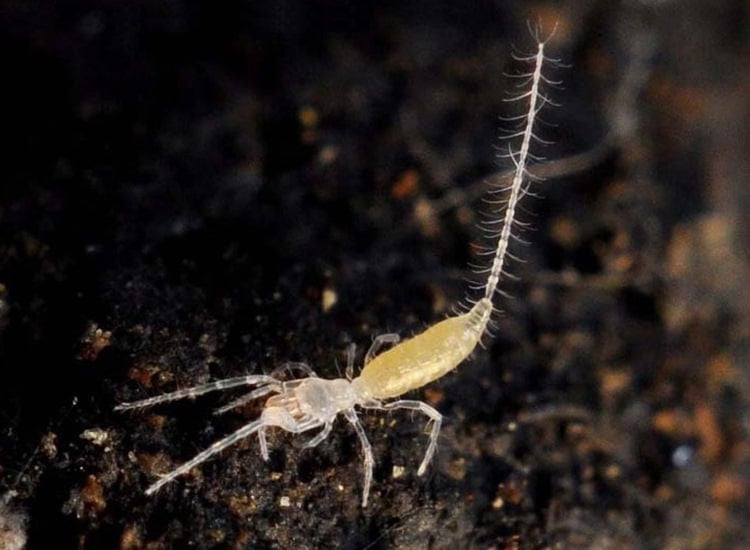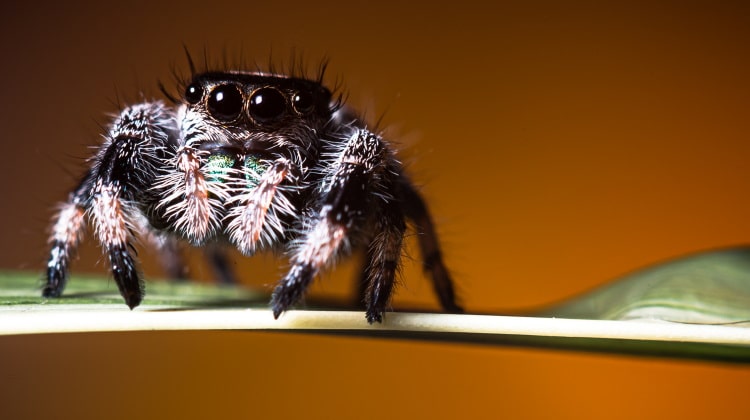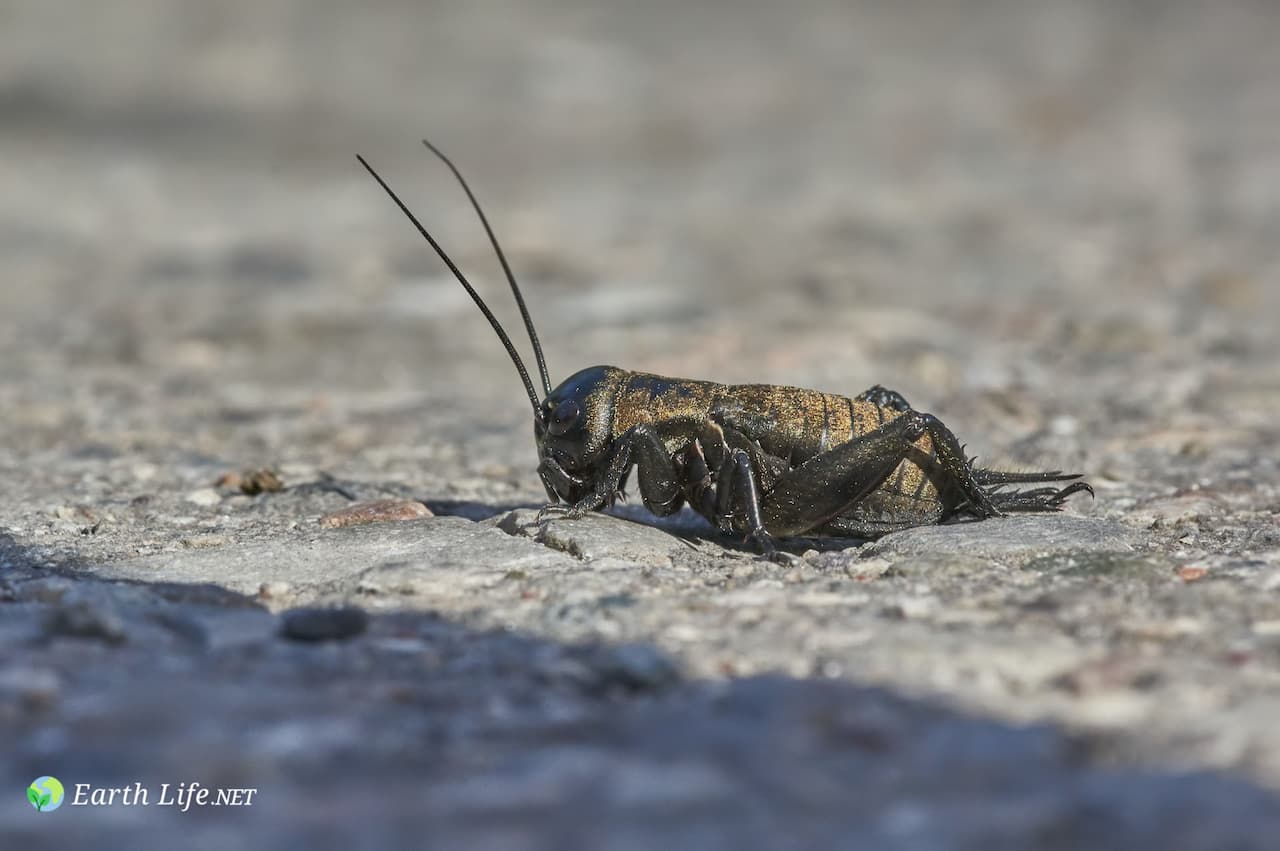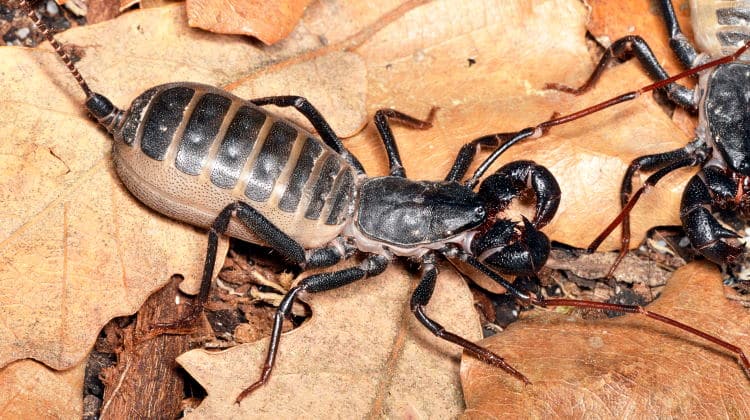Spider Venom 101: The Different Types And Why It’s Not “Poison”
Spider Venom
Nearly all spiders (the family Uloboridae is the exception) produce some venom, however very few are actually able to bite a human because of the thickness of our skin.
Furthermore, of the nearly 40,000 species of spiders known to science – only about 30 are dangerous to humans.
The image we hold in our mind of spiders as dangerous monsters is mostly untrue. For instance, despite what the majority people think, most species of tarantulas are timid and have only small poison glands.
Getting bitten by a tarantula in the wild is quite difficult (and there are no scientifically proven cases of death from tarantula bite). See Spider Mythology.
Spiders produce their venoms to immobilise their prey, so that they can feed without being hurt.
Most spider venom is far more effective against the invertebrates they feed on, than they are against humans and other large animals. Even among the vertebrates, some are more vulnerable to spider toxins than others.
For instance cows, horses and sheep are more sensitive to the venom of the Black Widow (Latrodectus mactans) than humans; and many deaths of such animals from this spider’s bite have been recorded.
A different example is the Australian Funnel-web spider (Atrax robustus), whose venom is highly toxic to primates (12 human deaths pre-1980) but which has little effect on cats, dogs and rabbits.
Venom vs Poison
Spiders should be called ‘venomous’ not ‘poisonous’.
This is because they inject a venom into the tissues of the body; the same applies to bees, wasps and snakes.
Something that contains poison that enters through your digestive system (or undamaged skin) and makes you ill is “poisonous”. Many fungi and the berries of numerous plants are poisonous. The Black Widow Spider is both venomous and poisonous… at least to camels.
Types Of Spider Venom
Spider venom can be divided into two different sorts: Neurotoxic venoms that attack the nervous system, and Cytotoxic or Necrotic venoms that cause tissue damage.
The venom of a particular spider may be a mixture of both types of toxins, but species normally specialise in one form or another. Different species have different balances of proteolytic enzymes and various amines and amino acids – and different toxins.
Neurotoxins generally attack the synapses or the presynaptic receptors of the CNS.
A-latrotoxin for instance over stimulates the body’s acetylcholine and noradrenalin transmitters, effectively paralyzing both the sympathetic and parasympathetic nervous systems.
Cytotoxic or Necrotic venoms contain proteolytic enzymes and other high molecular weight proteins, that attack body tissues; causing sores, blisters and internal damage.
Generally speaking, neurotoxic venoms are more dangerous than cytotoxic venoms. Most snake and scorpion venoms are neurotoxic. However Cytotoxic venoms can kill; Recluse Spiders produce Cytotoxic venoms.
Common Venomous Spiders
Black Widow Venom (Latrodectus mactans)
- Neurotoxic
- Bite painless
Toxin is called a-latrotoxin and it has a molecular weight of about 130,000 daltons. Pain begins 10 to 60 minutes after bite in lymph nodes. Then it spreads to muscles; muscular cramps follow, especially abdominal muscles. Contorted facial expression, swollen eyelids, inflamed lips, jaw clenched. If diaphragm and intercostal muscles affected, death can follow.
All this accompanied by severe anxiety. Without treatment, symptoms last for up to five days and complete recovery can take weeks. Antidote and calcium gluconate will relieve symptoms in 10 to 20 minutes.
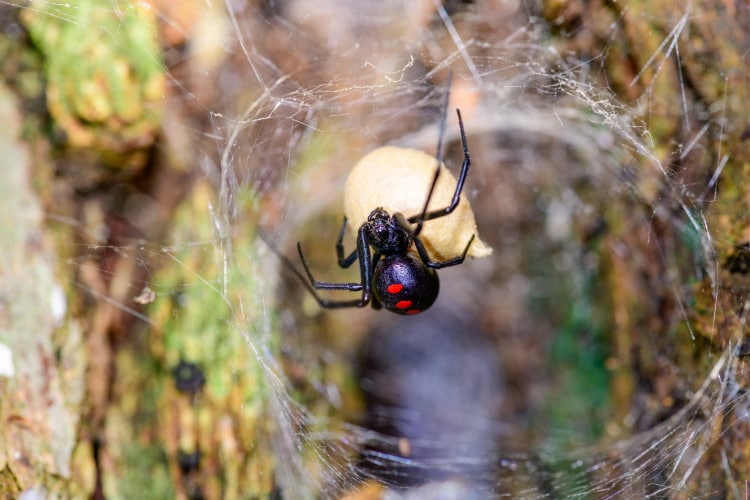
Recluse Spider Venom (Loxosceles reclusa L. laeta, L. gaucho and L. rufescens)
- Cytotoxic
- Bite mildly painful
A burning stinging sensation, local swelling, and necrosis (often deep) of the skin from the enzyme sphingomyelinase, followed by restlessness and vomiting. The venom also includes haemolytic agents that turn the victim’s urine black; this can result in kidney failure and death.
Finally, it should be remembered when listening to people’s spider stories that many injuries attributed to Loxosceles are not in fact the result of its bite. Proven mistakes include: other spiders, Chiracanthium and Steatoda, kissing bugs, pajarello ticks, poison ivy, bed sores and even allergic reactions.
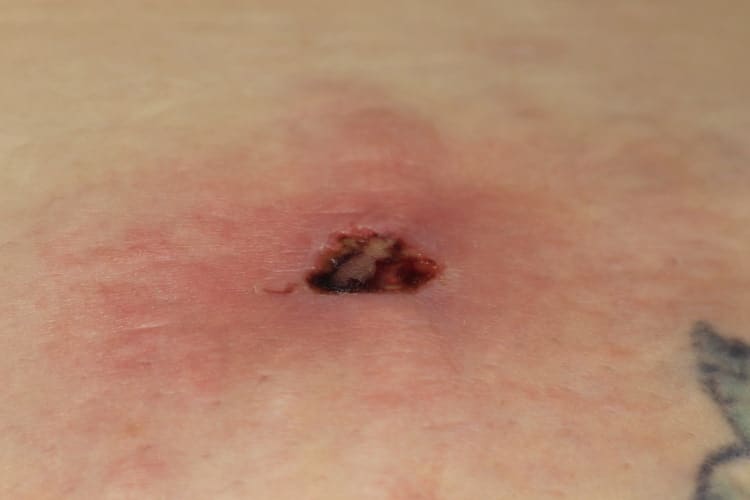
Wandering Spider Venom (Phoneutria spp.)
- Bite extremely painful
Can cause shock, sweating, accelerated heart rate and feeling cold and tense. Bites to humans normally only involve a small amount of toxin and are seldom fatal.
Australian Funnel Web Venom (Atrax robustus)
- Neurotoxic
- Bite painful
Severe pain, shivering, muscle cramps, loss of eyesight and eventually paralysis of the breathing centre which can lead to death.
Australian Redback Venom (Latrodectus hasselti)
- Neurotoxic
Similar to Black Widow, but less intense; it has caused fatalities but not since the antivenom was developed.
Final Thoughts
Man is an ingenious animal and both the natives of North America and the Bushmen of the Kalahari (Africa) used spider venom on their arrow heads. In the modern world, scientist’s are looking into using spider venom as an insecticide.
Anyway, I hope this has been an interesting introduction to the various types of spider toxins.
Perhaps now you’d like to learn a little about spider silk.

